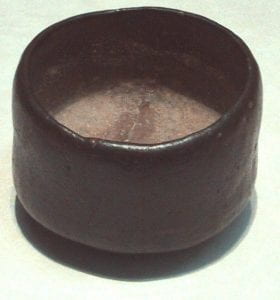Journal 6

I’ve always had an interest towards Japanese art, design, and architecture. Specifically their minimalistic style and how they are able to incorporate nature and organic shapes in their design. Japanese aesthetics always embraced the idea of imperfection and transience. And this means that beauty is incomplete and imperfect. This idea derives from their religion, Buddhism. They believed the three marks of existence which are absence, impermanence, and suffering. One of my favorite Japanese aesthetic that I’ve always been interested in is called the wabi-sabi. This aesthetic embraces authenticity of the object. This means that it can be rough, withered, and simple.
This style inspires me because I’ve always been intrigued by how organic shapes can influence design. Additionally, I’ve always had an interest in different types of pottery which differ from each culture. And the best embodiment of the wabi-sabi aesthetic are Japanese pottery. At the Japanese tea ceremony, most of the pottery items that they utilize look imperfect and rough. They do not look finished because of how asymmetrical they looked.
I believe that this reflects on nature and its qualities. This is because of how organic it looks to be. In my opinion, wabi-sabi embraces nature because it uses the idea of how natural and unique making it look like it’s always changing and moving. Also, this idea brings how they are able to undergo change and unpredictable conditions. This provides somewhat intimacy with the object. The imperfection it provides shows complexity while accepting the idea of simplicity. This idea is not only seen in design but in their way of life. The concept of learning how to adapt to different environments depending on the situation. All these ideas are reflected on the wabi-sabi design.
Reading Questions:
Le Corbusier Type Needs
- How has decorative art become orthopedic which appeals to our imagination?
- What is the art of the engineer and what does it have to do with decorative art?
Loos Ornament and Crime
- What do you mean by “ornament is wasted labour and hence wasted health?”
- Why do ornaments today have no connection with us or human connection?
Loos Poor Little Rich Man
- What improvements did the man go through to make himself happier?
- What does it mean to learn to go about life with one’s own corpse?
Mary Mcleod Charlotte Perriand Her First Decade as a Designer
- What was Perriand’s main inspiration/influence in her designs?
- How has her design evolved over time throughout the decade?